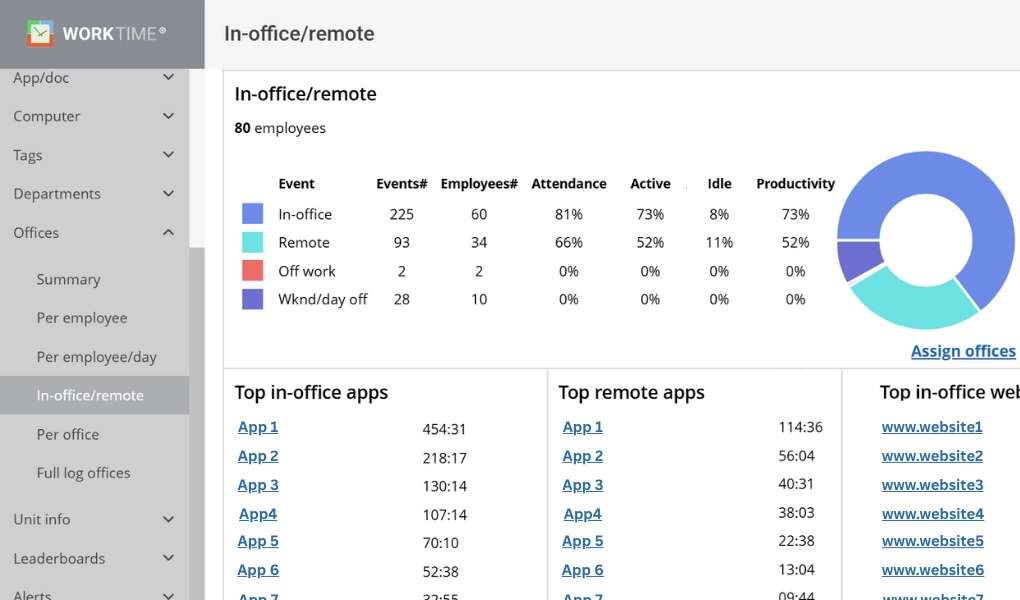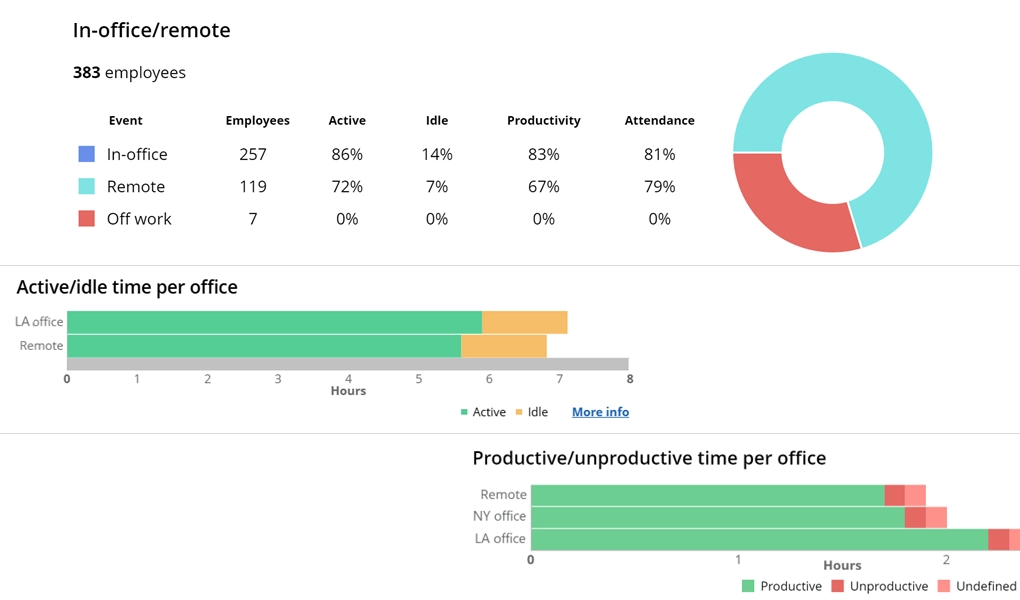
For Windows, macOS
Terminal/Citrix
Cloud, on-premise
1 to 15,000+ computers
In-office, hybrid, remote






26
Years of experience
Trusted by 9,500+ global brands and organizations
The In-office/remote report displays attendance, active time, and productivity % while working remotely or in-office.


Whether you have one or multiple offices (locations), you can group IP addresses belonging to each office, and WorkTime will track where employees work and how productive they are in each location. On this screenshot there are two offices (GW, WL).
Try now 14 days freeWorkTime is Green monitoring software, the only non-invasive monitoring on the market. Whether your employees work in-office or remotely from-home, WorkTime can keep them productive without going too far.
GDPR compatible